Scientists make ‘astonishing’ discovery while studying 7,000-year-old underwater city
A ‘beautifully preserved’ submerged landscape, complete with a network of rivers and estuaries, has been mapped in 3D around a 7,000-year-old sunken city.
The scan follows up on last year’s discovery of a nearby Stone Age road, four metres beneath the Adriatic Sea, that once connected this ancient city to the mainland.
The town, known as Soline, was built on an artificial landmass by the ancient Hvar culture. However, it slowly began to sink off the coast of present-day Croatia as sea levels rose due to the melting of glaciers during the last Ice Age, which began around 12,000 BC.
An international team of researchers now hopes to use this ‘stunning’ and uniquely pristine submerged geography to better plan their search for more ancient submerged sites and artefacts from the people of Hvar.
A ‘beautifully preserved’ submerged landscape, complete with a network of rivers and estuaries, has been mapped in 3D off the coast of Croatia – surrounding a submerged 7,000-year-old city. Efforts to map the geography around this ancient city in 3D beneath the Adriatic Sea began in 2023
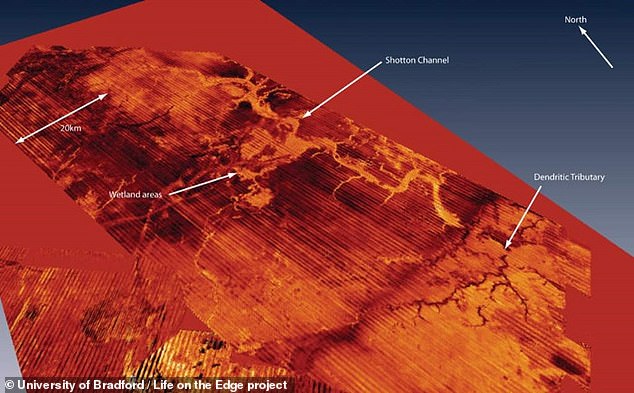
“It’s a more diverse landscape and it’s better preserved than we expected,” said geoarchaeologist Dr Simon Fitch, the lead researcher on the new project. Above, a 3D map from Dr Fitch’s previous project, which mapped the submerged landscape of Doggerland in the North Sea.
“The landscape is more diverse and better preserved than we expected,” said geoarchaeologist Dr Simon Fitch, lead researcher on the new project.
“The results,” he said, “provided much more detail than we expected.”
The underwater landscape that once lined the Hvar has been found in the waters near Croatia the second largest Split, where Dr. Fitch traveled in March 2023 to initiate this first-ever scan of the seabed using advanced 3D underwater seismic sensors.
“There are beautifully preserved rivers and estuaries buried beneath what is now the seabed,” Dr. Fitch explains.
“Split’s unique environment, which is quite sheltered, has allowed much of that to be preserved,” he said.
Split’s harbor coast lies on a bay protected from the unpredictable currents of the wider Adriatic Sea by the islands of Brač and Šolta in Croatia’s Dalmatian archipelago.
The Adriatic Sea, which separates Croatia from Italy, was long an ancient trade route between peoples connected via the Adriatic Sea to the larger, neighboring Mediterranean Sea.
Previous explorations of the waters have revealed Roman artefacts, a 2,200-year-old shipwreck and another Hvar settlement in nearby Gradina Bay, 4.5 metres below sea level and ‘almost identical to the Soline settlement’, according to the University of Zadar.
The new project builds on Dr. Fitch’s recent initiatives using data from offshore oil exploration. This data was created and donated by the company Petroleum Geo-Services, which collects 3D geological maps using seismic equipment, similar to earthquake warning data.
Dr Fitch and his team used the company’s data to map an ancient lost island in the North Sea, Doggerland, which once lay between Britain and the Netherlands.
But the new Adriatic project is the first to use this kind of 3D seismic mapping equipment directly for geological archaeology.
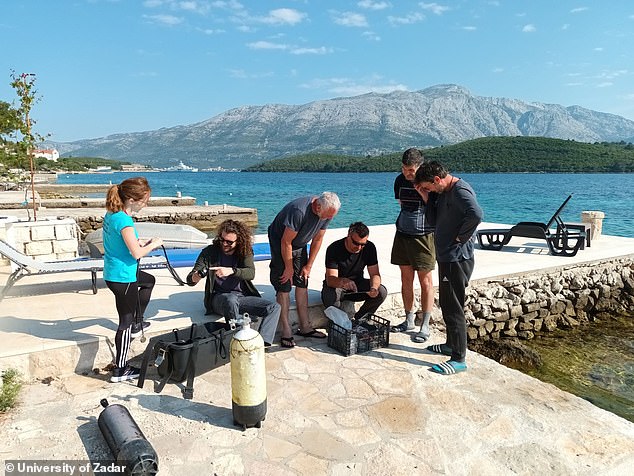
An international team has been working together on the underwater archaeological excavations of this site off the coast of Split, Croatia. Pictured above is the diving team from last May who discovered the 7,000-year-old road to the submerged Neolithic city of Soline amid this parallel 3D mapping project
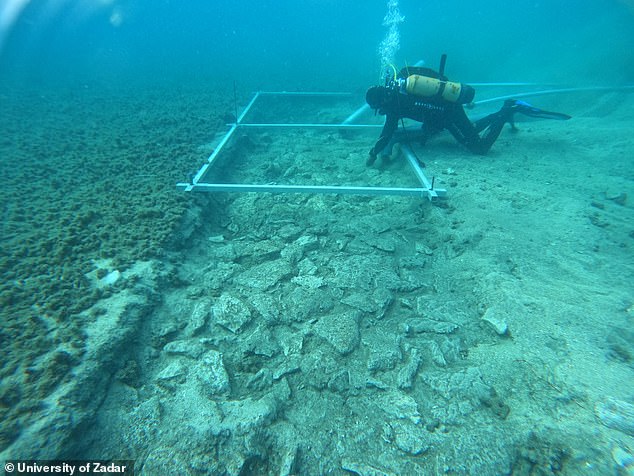
The remains of the Stone Age road were discovered beneath a layer of what scientists called ‘sea slime’
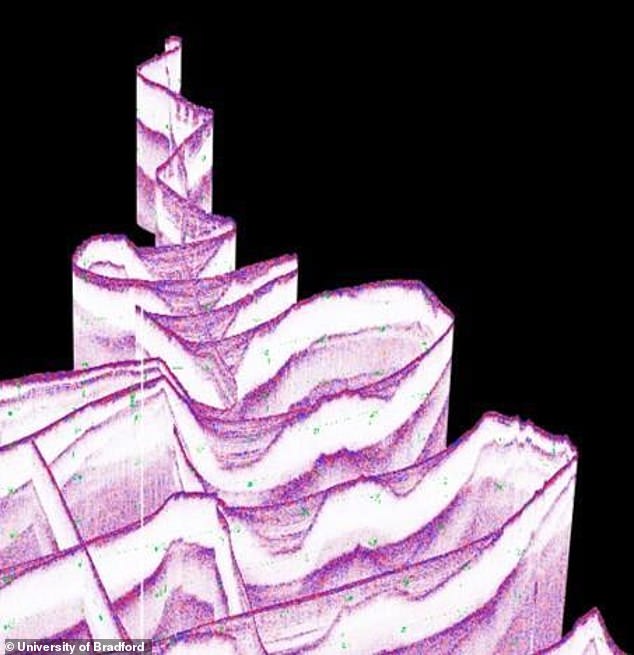
Dr Fitch, who teaches at the University of Bradford, said his team plans to send another team of divers down later this year to inspect some of the locations revealed by the new 3D mapping. Above is a sample of the 3D mapping data produced by the new Adriatic project
“When we started using our high-resolution sensors, we discovered more rivers, more water in the landscape, more environments,” said Dr. Fitch.
“That’s surprising because it suggests it’s more likely that people lived there.”
By understanding where rivers once flowed, the researcher noted, his team can better determine which places were likely inhabited by humans, including more prehistoric settlements of the Hvar culture, increasing the chances of success of their underwater excavations.
“Our ultimate goal is to find human artifacts,” Dr. Fitch said, “and this new understanding of the landscape makes that more likely.”
“Croatia is the gateway to Europe,” he added, “so if you think about the rise of agriculture in Europe, it is a very important landscape and it always has been.”
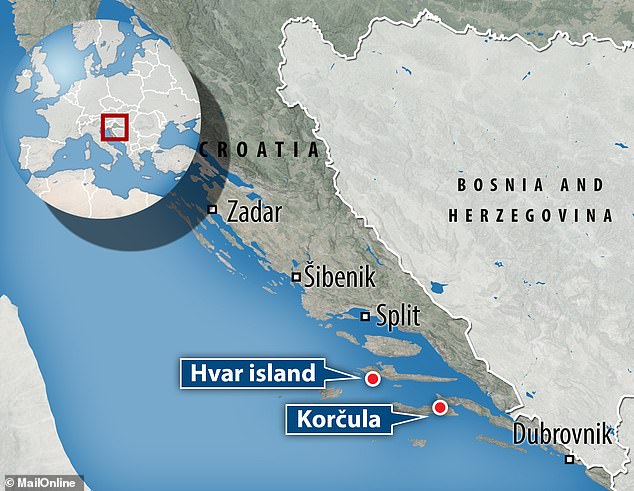
Korčula, part of the Adriatic archipelago, was originally connected to the mainland, but when sea levels began to rise at the end of the last ice age in 12,000 BC, flooding more or less created the current layout of about 8,000 years ago.
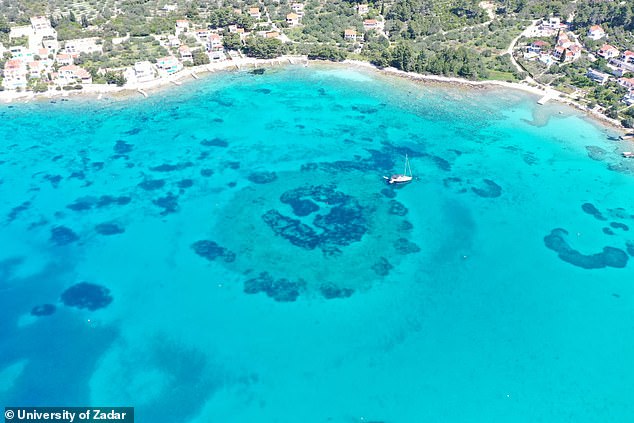
The same research team also discovered another underwater settlement on the other side of Korčula
A better understanding of the life of the inhabitants of Hvar can help bridge the gap between prehistory and the more famous and legendary era of the ancient Greeks and Romans along these seas, who became famous in their era of antiquity.
It could also help scientists understand how past human civilization dealt with rising sea levels caused by climate change.
“The speed at which that landscape disappeared into the sea is also important,” Dr. Fitch said. “It affected people and culture.”
‘If we understand the landscape, we can understand the archaeological picture as a whole much better.’
Dr Fitch, who teaches at the University of Bradford, said his team plans to send another team of divers later this year to inspect some of the sites revealed by the new 3D maps.
Archaeologist and art historian Vedran Barbarić, associate professor at the University of Split, presented the new findings together with Dr. Fitch at a public lecture in Split on May 10, 2024 and reported by local media Dalmacija Danas.
Their future work in the coming years will involve mapping both the Adriatic and North Seas as they looked between 10,000 and 24,000 years ago, during the last ice age, when sea levels were about 90 metres lower than today.
Archaeologists in this part of the Adriatic Sea made their first surprising discoveries after analyzing satellite images of the water around the flooded site of Soline, discovered in 2021 off the coast of the Croatian island of Korčula.
Carbon dating of preserved wood has shown that the settlement of Soline dates back to about 4900 BC.
Soline was discovered by archaeologist Mate Parica from the University of Zadar. Together with his colleagues, he went to the area to take a closer look.
So far, artifacts found among the Hvar people from the Neolithic period include “cream-colored” swords, stone axes and “fragments of offerings,” according to the University of Zadar.
